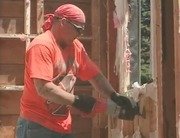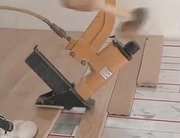Excavating to Install a New Waterline
Bob reviews details of the excavation process and discusses the new copper pipes that will be used.
Clip Summary
Bob meets with Dick Hawley of John Hawley Inc. to watch the excavation for the new waterline. They discuss details of the process, as well as the copper pipes that will be used, which were probably not available when the system was last replaced.







